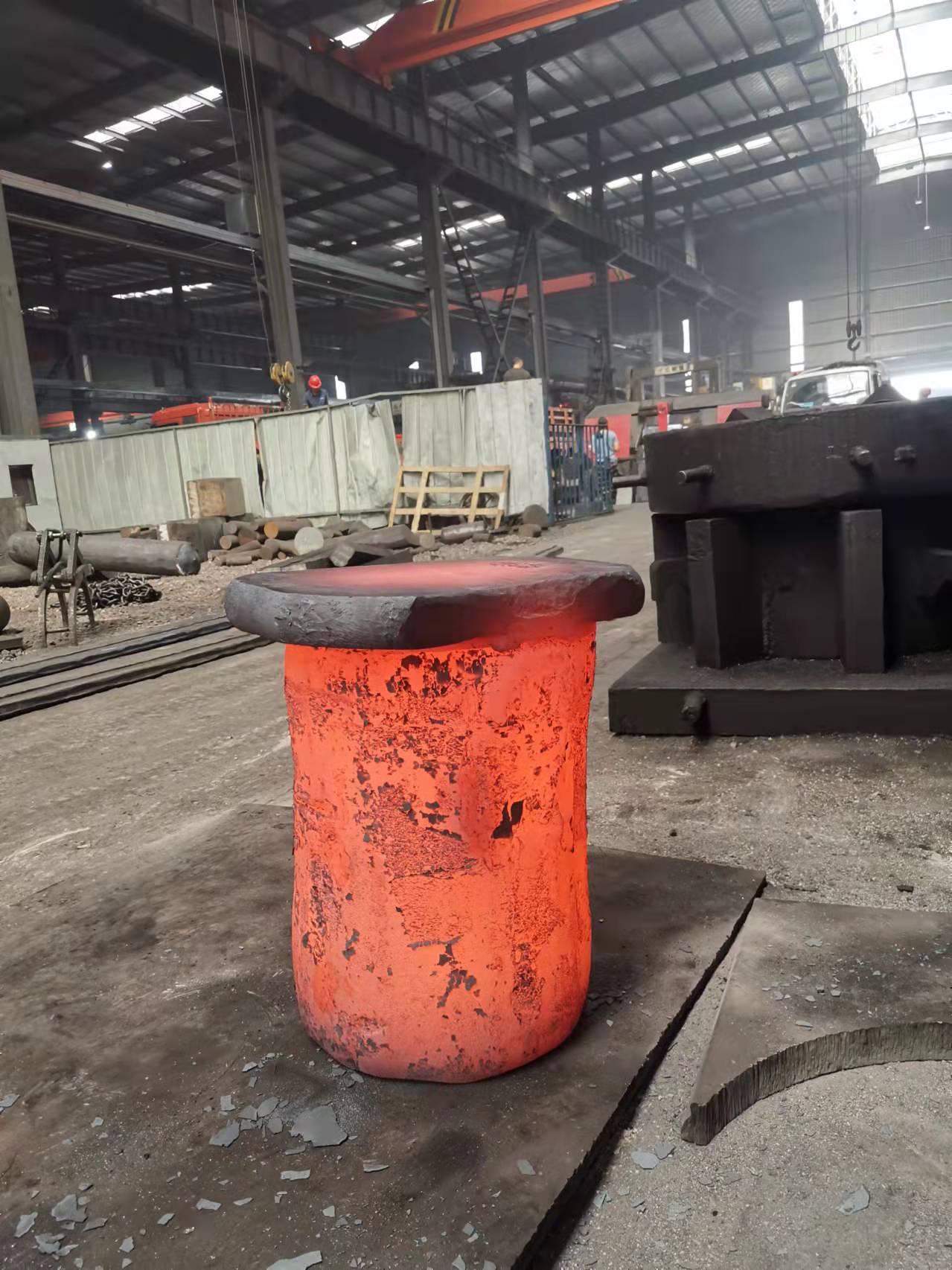Advantages of open die forging
2022-02-25
Open die forging refers to the processing method of forgings that use simple universal tools or directly apply external force to the blank between the upper and lower anvils of the forging equipment to deform the blank to obtain the required geometric shape and internal quality. Forgings produced by the Open die forging method are called free forgings.
Open die forging is mainly based on the production of small batches of forgings. Forging equipment such as forging hammers and hydraulic presses are used to form and process the blanks to obtain qualified forgings. The basic processes of free forging include upsetting, drawing, punching, cutting, bending, torsion, offset and forging. Free forging is all hot forging.
The open die forging forging process includes basic process, auxiliary process and finishing process.
The basic processes of open die forging forging: upsetting, drawing, punching, bending, cutting, torsion, offset and forging, etc., and the three most commonly used processes in actual production are upsetting, drawing, and punching.
Auxiliary process: pre-deformation process, such as pressing jaws, pressing steel ingot edges, cutting shoulders, etc.
Finishing process: The process of reducing the surface defects of forgings, such as removing the unevenness and shaping of the surface of the forgings.
advantage:
(1) Great forging flexibility, can produce small parts less than 100kg, and can also produce heavy parts up to 300t or more;
(2) The tools used are simple general tools;
(3) Forging forming is to gradually deform the blank in different areas, so the tonnage of forging equipment required for forging the same forging is much smaller than that of model forging;
(4) The requirements for the accuracy of the equipment are low;
Open die forging is mainly based on the production of small batches of forgings. Forging equipment such as forging hammers and hydraulic presses are used to form and process the blanks to obtain qualified forgings. The basic processes of free forging include upsetting, drawing, punching, cutting, bending, torsion, offset and forging. Free forging is all hot forging.
The open die forging forging process includes basic process, auxiliary process and finishing process.
The basic processes of open die forging forging: upsetting, drawing, punching, bending, cutting, torsion, offset and forging, etc., and the three most commonly used processes in actual production are upsetting, drawing, and punching.
Auxiliary process: pre-deformation process, such as pressing jaws, pressing steel ingot edges, cutting shoulders, etc.
Finishing process: The process of reducing the surface defects of forgings, such as removing the unevenness and shaping of the surface of the forgings.
advantage:
(1) Great forging flexibility, can produce small parts less than 100kg, and can also produce heavy parts up to 300t or more;
(2) The tools used are simple general tools;
(3) Forging forming is to gradually deform the blank in different areas, so the tonnage of forging equipment required for forging the same forging is much smaller than that of model forging;
(4) The requirements for the accuracy of the equipment are low;
(5) The production cycle is short.

Previous:Forging materials
X
We use cookies to offer you a better browsing experience, analyze site traffic and personalize content. By using this site, you agree to our use of cookies.
Privacy Policy



